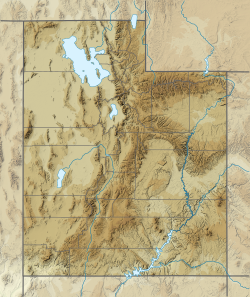| Setting Hen Butte | |
|---|---|
 South aspect | |
| Highest point | |
| Elevation | 5,055 ft (1,541 m) [1] |
| Prominence | 235 ft (72 m) [1] |
| Parent peak | Rooster Butte [1] |
| Isolation | 0.42 mi (0.68 km) [1] |
| Coordinates | 37°16′17″N109°48′25″W / 37.2712539°N 109.8070119°W [2] |
| Geography | |
| Location | Valley of the Gods San Juan County, Utah, U.S. |
| Parent range | Colorado Plateau |
| Topo map | USGS Cigarette Spring Cave |
| Geology | |
| Rock age | Permian |
| Mountain type | Butte |
| Rock type | Sandstone |
| Climbing | |
| Easiest route | class 5.7 climbing [1] |
Setting Hen Butte is a 5,055-foot-elevation (1,541-meter) summit in San Juan County, Utah, United States.
Contents
Setting Hen Butte should not be confused with another butte named Setting Hen within the same county but further southwest at Monument Valley, near Eagle Mesa.






